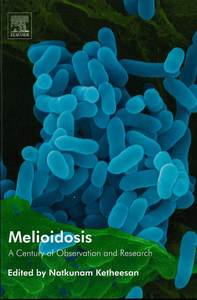The molecular detection of Burkholderia pseudomallei
Lertmemongkolchai, Ganjana, Khaenam, Prasong, and Norton, Robert (2012) The molecular detection of Burkholderia pseudomallei. In: Ketheesan, Natkunam, (ed.) Melioidosis: a century of observation and research. Elsevier, The Netherlands, pp. 168-173.
![[img]](https://researchonline.jcu.edu.au/26522/1.hassmallThumbnailVersion/26363_cover.jpg)
|
Image (JPEG) (Book Cover)
- Cover Image
Download (161kB) |
|
|
PDF (Published Version)
- Published Version
Restricted to Repository staff only |
Abstract
The diagnosis of melioidosis relies upon culture. This can take up to four days and errors in identification by standard identification systems can occur. The importance of Burkholderia pseudomallei as both a potentially fatal pathogen and as a bioterrorism agent, has led to the development of polymerase chain reaction (PCR) based detection methods. These have targeted a number of genes and inc1ude type III secretion system genes (orf2, orf11, orf13 and SCU2), 16S and 23S rRNA genes, f1agellin C gene (fliC), ribosomal protein subunit S21 gene (rspU) and a single nuc1eotide polymorphism in a putative antibiotic resistance gene (P27). When used to confirm the identity of B. pseudomallei, PCR has been shown to be very specific and sensitive. When used for direct detection from c1inical specimens however, the sensitivities and specificities of a number of assays have been less promising. © 2012 Elsevier B.Y. Ali rights reserved.
| Item ID: | 26522 |
|---|---|
| Item Type: | Book Chapter (Research - B1) |
| ISBN: | 978-0-444-53479-8 |
| Date Deposited: | 19 Apr 2013 04:26 |
| FoR Codes: | 11 MEDICAL AND HEALTH SCIENCES > 1108 Medical Microbiology > 110801 Medical Bacteriology @ 100% |
| SEO Codes: | 92 HEALTH > 9201 Clinical Health (Organs, Diseases and Abnormal Conditions) > 920109 Infectious Diseases @ 100% |
| Downloads: |
Total: 347 Last 12 Months: 4 |
| More Statistics |



